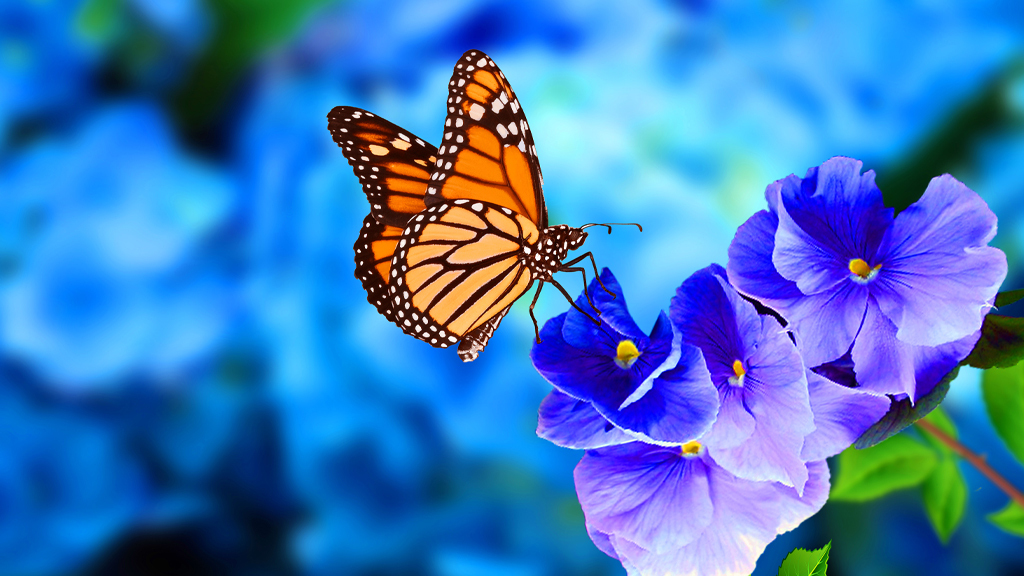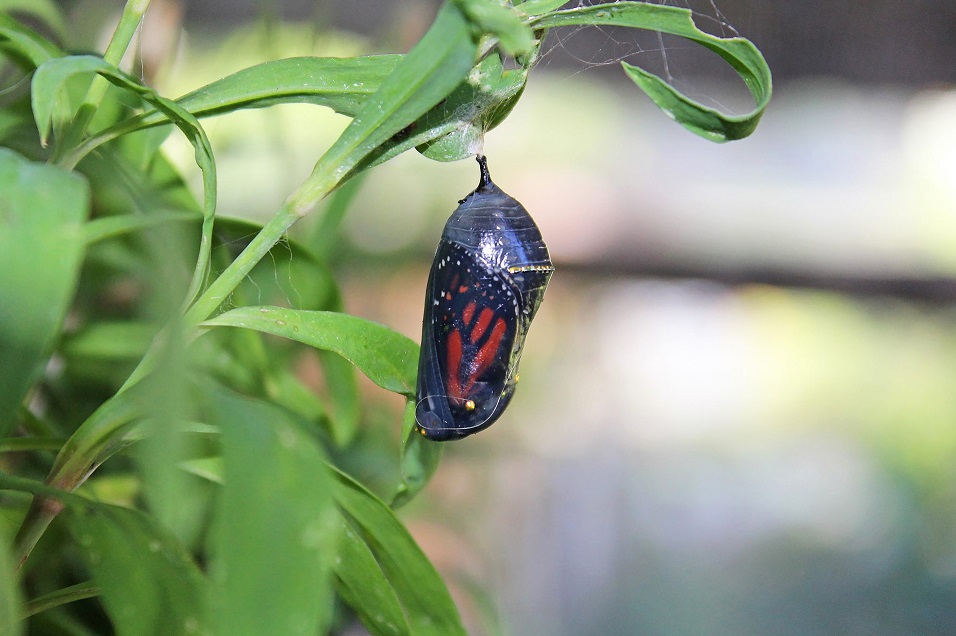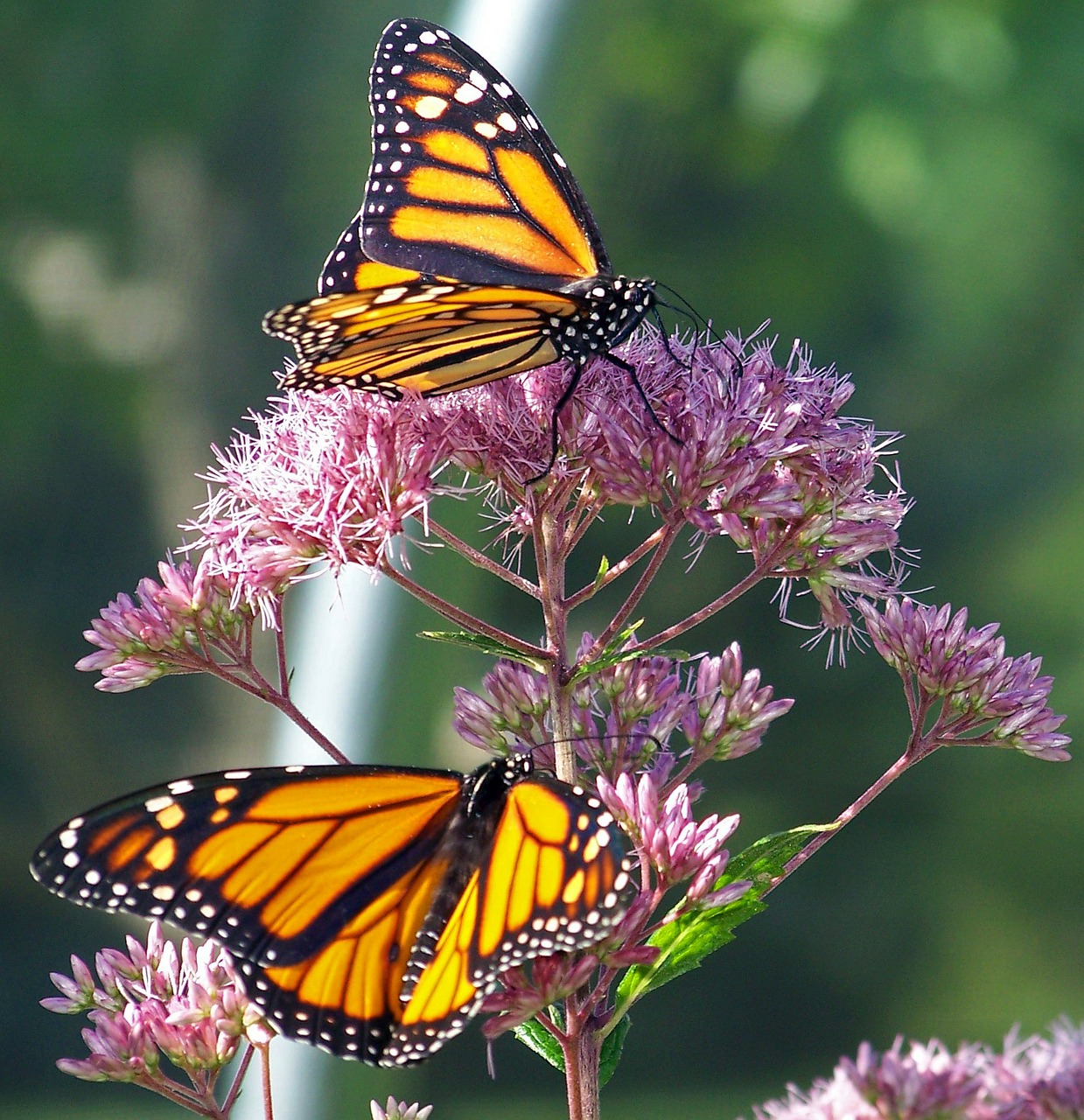Middle School High School | Daily Do
Why is the Monarch Butterfly Population Changing?

Biology Citizen Science Crosscutting Concepts Disciplinary Core Ideas Is Lesson Plan Life Science NGSS Phenomena Middle School High School Grades 6-8 Grades 9-12
Sensemaking Checklist




Introduction
In today’s Daily Do, students engage in science and engineering practices to make sense of what causes the overwintering population of the monarch butterfly to change. Students gather information about the path and needs of the monarch butterfly population as it journeys north in the spring and south in the fall. Students use cause-and-effect thinking to make a claim about why the monarch butterfly population is changing.
Presenting the Phenomenon
Guidance: The goal of using this phenomena is to get students to ask questions about the butterfly migration and the changing population that will motivate and guide their learning.
Experience the Phenomenon:
Use the video, “Monarchs by the Millions: Welcome to the Butterfly Forest,” to familiarize students with the monarch butterfly and for them to experience the place where the butterflies spend the winter.
Embed code: https://www.youtube.com/embed/zzEdyWQ0IMk
Ask students to turn to a partner and share what they noticed in the video and what they are wondering about. Next, have students share what they observed and their questions with the class. Students may respond:
- I noticed a lot of butterflies in Mexico.
- I notice the butterflies are in the trees.
- I notice that they are all the same kind of butterfly.
- I wonder how many butterflies there are.
- I wonder where they all come from.
- I wonder what makes the forest unique that causes the butterflies to come there.
Next, show students the path the butterflies take to get to the overwintering sites in Mexico using the Monarch PEAK Migration map from Journey North. Select 2019 so they can see a whole year’s fall migration. You can press “Play” or toggle through each week of the migration using the arrow key. You might instead have students work in pairs to make and record observations of the 2019 fall migration.
Guidance: The goal here is to have students notice patterns in the monarch sighting from August to November. The goal is not for them to know why or how the monarchs travel, just that they do.
As a class, have students share their observations. Students should notice the monarch butterfly fall migration begins in the northern United States and southern Canada in the late summer and progresses south until finally ending in Mexico in the late fall and early winter. Direct students’ attention back to the class list of questions. What questions can they now answer? Do they have any new questions to add? Common questions include:
- How can something so small and fragile looking travel so far?
- Why don’t they just stay where it is warm?
- Why do they go there?
- Do we find monarch butterflies everywhere?
- Do they travel together on purpose or does it just happen?
Explain that some of these things we will figure out and some of them are still a mystery to scientists. However, because so much of the monarch population migrates to Mexico it is easy for scientists to monitor the population.
Next, have students brainstorm ideas about why scientists would want to monitor monarch butterfly populations. If students struggle for ideas, ask them to think about what role butterflies play in the ecosystem and what signs we look for when we are monitoring ecosystems.
Student ideas could include:
- see if the population is growing, getting smaller or staying the same.
- make sure the butterfly population stays healthy because they are pollinators.
- find out what they do when they are in Mexico.
Guidance: Surfacing prior knowledge from previous grade bands can help lead students to need to look at the size of the monarch populations. Students start building ideas about ecosystems, populations of organisms, and organism requirements in early elementary grades. In fifth grade, they are introduced to the idea of ecosystem health and what it could mean when something in the ecosystem changes.
Tell students scientists monitor populations of many different kinds of organisms, including monarch butterflies. Tell students there are several years of monarch population data you would like them to look at and then share the graph, Monarch Butterflies Overwintering in Mexico.
Have students discuss patterns they notice with a partner, and then share those patterns with the class. Patterns will likely include:
- There are less butterflies in more recent years than the past.
- Some years the populations are high, and others are low.
- Between 2012 and 2015 the population was the lowest.
Guidance: Students are just looking for patterns in the graph and do not necessarily have to know the size of a hectare. However, if it is conceptually appropriate for your grade-level students, you can introduce the term hectares and why it is used in measuring certain populations.
Creating a Driving Question Board
Guidance: A Driving Question Board (DQB) is a tool to organize students' thoughts and monitor progress in making sense of the phenomenon. The DQB should be set up in a place that is visible to all students and is easy to revisit as students make sense of the phenomenon. A bulletin board, section of a wall, large chart paper, or shared digital space (e.g., Jamboard, Padlet, Pinup) work well to organize student questions. Similar questions can be grouped together. The DQB should be revisited after students learn more about the phenomenon to see what questions have been answered and to add new questions.
Have students think about the video of monarch butterflies in Mexico, the map of their fall migration, and what they observed in the graph and then ask them to write down any questions they have about the monarch butterflies. These can be previous questions or new questions they have about the graph. Tell students their questions should help them figure out how to explain their observations. They should write one question per sticky note. In a class discussion, have students share these questions, one at a time, until all students' questions have been shared. (You might ask students to share only one of their questions with the class.) These questions should be posted publicly in a classroom or digital space.
Use students’ questions, especially those that focus on the observation that some years the population is high and some it is low, to focus students on the question, “What causes the monarch butterfly population to change?” Have students discuss their initial answer to this question with a partner. Then have partners share their ideas with the class.
Guidance: Encourage students to thoroughly describe their thinking by asking follow up questions such as, “Can you tell me more about that?” or “What makes you think that?” These responses can be used to understand what students already know about the monarch butterfly migration and as a chance for students to share their thinking with each other.
Tell students they will gather some more information about these butterflies that will help them explain their needs, migration, and think about what may cause changes in the overwintering population.
Gathering Information
Ask students to make predictions about what the monarchs do when they leave Mexico. Prompt students to think about the path of their spring migration. Use the Monarch Adult (First Sighted) map from Journey North to have students explore the monarch butterflies’ spring migration.
In small groups, have students share what they notice and what they wonder and discuss observations as a class. Have students share any similarities and differences they notice between the fall and spring migration paths. These similarities and differences could include:
- The monarch butterfly spring migration begins in Mexico in the winter and moves north.
- The migration ends in the northern United States and southern Canada in the fall.
- The spring migration travel path is the same as the fall migration, but in the opposite direction.
Guidance: Consider having students use a summary table to organize new information they have learned and use that summary of information in making sense of the changing population of the monarch butterfly. Ambitious Science Teaching describes the use of summary charts in their Face-to-Face Tools: Making Changes in Students Thinking Visible Over Time resource. A KLEWS chart will also work for this purpose.The KLEWS to Explanation-Building in Science article, published in the NSTA journal Science and Children, describes how to organize and use KLEWS charts.
At this point, students should understand that the monarch butterfly begins to migrate from the northern United States and southern Canada in September and begin to arrive in central Mexico beginning in September. In March they begin migrating into the southern United States and continue traveling north into May.
Next, ask students to think about what organisms need to survive and create a class list. The list may include: food, water, shelter/right temperature and air/wind. Then ask students, “Where do the monarch butterflies get the things they need on their journey...do they carry a little butterfly suitcase?”
Students should come to the conclusion that monarchs will need to get what they need to survive as they travel. Ask students to think about what monarch butterflies eat. What else should they know to help figure out what happened to the population over the past 20 years? Using “talk moves" facilitates discussions that helps students realize they need to get more information about what monarchs need and their migration.
Research - How do monarch butterflies make their journey?
Use student questions from the Driving Question Board to focus on the question, “How do monarch butterflies make their journey?” Have students read the “Migration and Tagging” webpage on the Monarch Watch website. In groups, have students discuss how the monarch butterflies make their journey and decide what important pieces of information they might use to explain a change in the overwintering population.
Students should notice that the monarch butterflies make their migration in several generations, the changes in migration and change in their life cycle occur because of shorter days and cooler temperatures, and their trip is fueled by nectar. Students may also discuss that scientists do not yet understand how the butterflies are able to navigate back to the overwintering sites and how they conserve energy on their journey.
After reading and discussing how monarchs migrate, return to the Driving Question Board to discuss questions that have been answered and new questions that students may have as a result of this new information.
Research - What does the monarch butterfly need to survive?
Use students’ questions from the Driving Question Board to focus on the question, “What do monarch butterflies need to survive?” Have students access the “Habitat Needs” webpage from the U.S Forest Service. Explain that the article will help learn more about the other living things that the monarch butterfly interacts with in its migration.
After students have read the information on the webpage, have them work in groups to share the things monarch butterflies interact with to meet their needs. Have students work in small groups to discuss the things they learned and record any new questions they have. Information that many students will likely record includes:
- Monarch butterflies lay eggs on milkweed.
- Monarch caterpillars feed on milkweed exclusively which makes them poisonous to predators.
- The butterflies require very little food in the winter, but need a lot of food as they begin their spring migration and reproduce in Texas.
Return to the Driving Question Board to see what questions have been answered and to add new questions.

Making Claims
Using the driving question, “Why does the monarch butterfly population change?”, have students work in small groups to use information they collected to identify factors of the monarch butterfly migration that impact the population size. Have groups share these impacts in a class discussion. As students share their ideas, make a list of impacts.
Guidance: Encourage students to share their thinking by using “talk moves” as they share the components they identified as possibly causing change to the population. Ask students, “Could you tell me more about that?” or “Why do you think that?”
In small groups have students select one factor they think is causing changes to the monarch overwintering population. Explain that many different factors can cause the population to change. Have groups construct a claim for how their factor could lead to an increase or decrease in the overwintering population.
Once students have made their claim, they should support their claim with evidence. Depending on their claim, students may use evidence from data gathered in their research or some students may need to engage in additional research.
Use the “Two Stray, One Stay” strategy for students to share their claims. Have students use the Argumentation Session Notes to document other groups' claims and improve their own claim. After students have discussed their claim with other groups, they should return to their own group to use the peer feedback to improve their original claim.
Guidance: Students can write a claim or prepare an oral presentation. White boards work well for students to share their claims. This Cause and Effect Graphic Organizer may be helpful to focus students on the mechanism for the population change.

Putting the Pieces Together
Ask students if they noticed similarities and differences in the claims that groups made. Students are likely to notice that the factors groups thought were causing the monarch butterfly population to increase and decrease were different, but that all of the claims were about changes in what the monarch butterfly needs as it migrates. Use student ideas from this discussion to ensure students understand the monarch butterfly requires living and nonliving factors to survive and changes in these factors result in changes in the population.
Tell students scientists are still working to figure out how many of the factors they considered impact the monarch butterfly population. There are many ways that citizens can help with understanding the monarch butterfly population including reporting observations of the species and ensuring that private and public spaces provide food for them as they migrate through their area.
Extensions
Students can consider participating in the many citizen science programs that monitor and track monarch butterfly populations. Some examples are:
Students can also learn How to build a pollinator garden to provide food and habitat for monarch butterflies.


